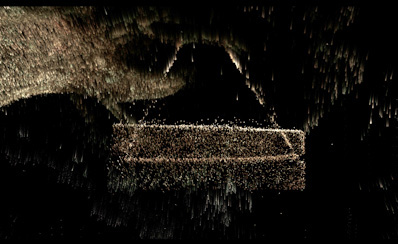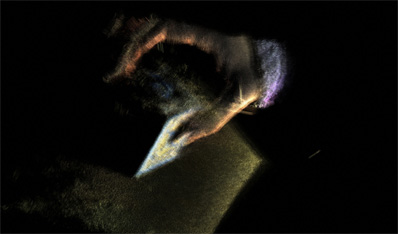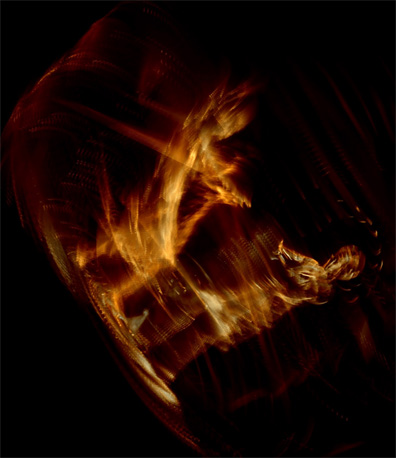Upending (2010 DOWNIE ESHKAR KAISER)
Upending takes the form of live 3D cinema and has the viewers’ eyes probing the projected imagery almost as if touching its light, feeling for the illusory surfaces of things as they cross the threshold from abstraction to likeness. This evening-length work premiered at EMPAC in March 2010.
A drama of disorientation and reorientation, Upending is enacted on both perceptual and thematic levels. Ordinary objects, spaces, and bodies are probed and queried from unfamiliar perspectives, so that viewers become exquisitely aware of their own perceptual processes and of the their minds’ continual attempt to spin out meaning from what their eyes take in.
The play of images is accompanied by a new EMPAC-produced recording of Morton Feldman’s first String Quartet by the FLUX Quartet that places the listener, literally, in the center of the ensemble, with every sonic gesture articulated across space simultaneously. Through this aural lens, the moving image becomes almost balletic, even as the projected play of light allows the audience to hear Feldman as never before.
Methods
For Upending, we devised several new methods to expand the possibilities of 3D imagery, several of which are illustrated and described here.
Frameless photography

One sort of imagery is typified by this still of a tree swing. Such scenes are captured from the real world photographically, from which the original 3D space is then reconstructed. The resulting “point clouds” of these reconstructions form the basis for our renderings. The effect is of haunting stereoscopic spaces that seem to float halfway between our world and another. We’ve been intent on losing the fixed frame of the photograph, enabling the viewer to focus on particular objects or figures that they single out within the depths of the image.
An illustrative clip and explanation of our initial approach are given here.
3D motion from video

This image, of a hand picking up an alphabet block, derives from an algorithmic treatment of stereoscopic video, which generates each frame only on the basis of its underlying physical motion.
3D gesture drawing

A third source of the Upending imagery is of the type pictured above, of children spinning themselves dizzy. This derives from gesture drawings captured from a tablet, projected into 3D, and transformed along the animation path of an articulated body. These drawings can then be set into human motion by means of motion capture.